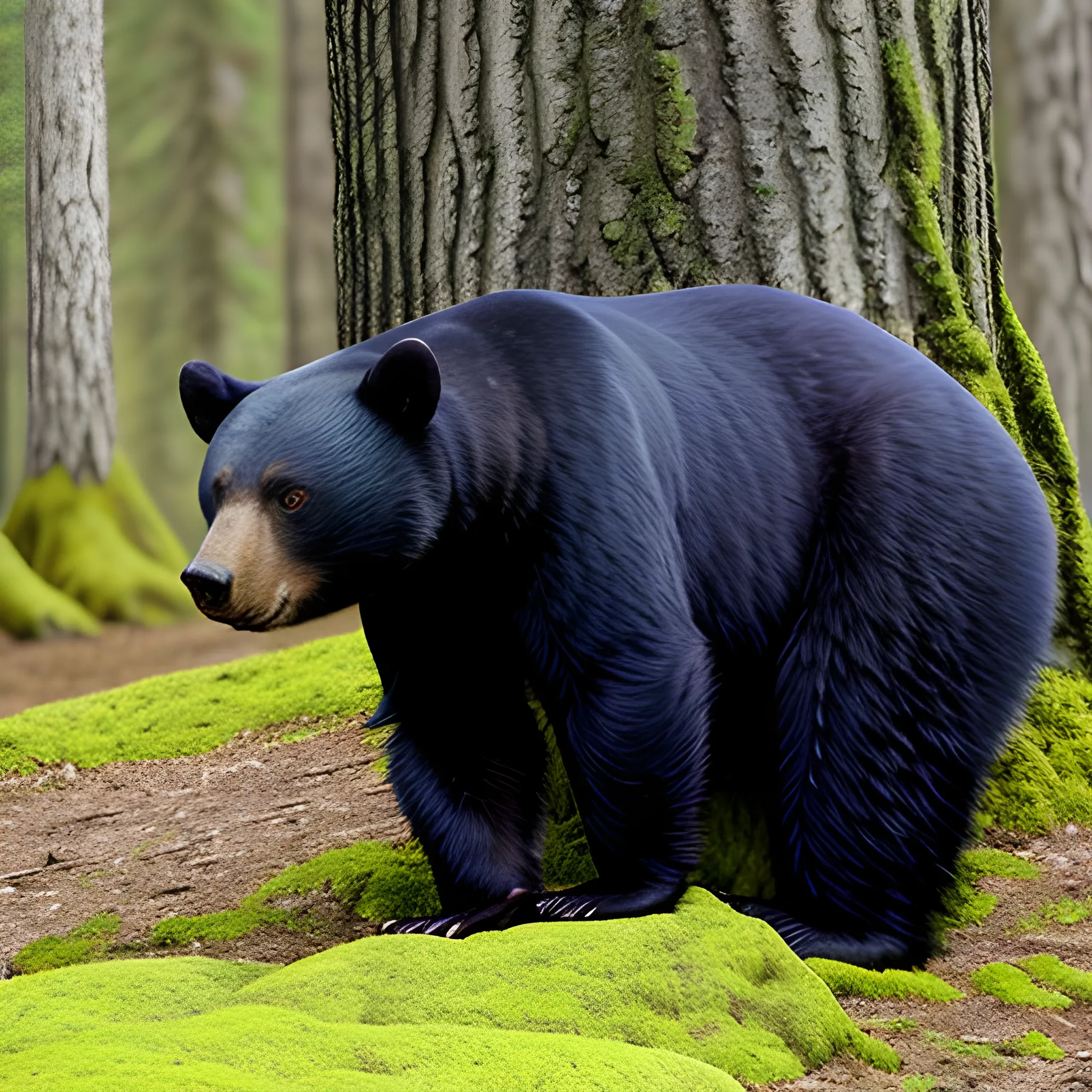Appearance: The black bear is a large mammal with a sturdy build...
Appearance: The black bear is a large mammal with a sturdy build. Its fur is thick and mostly black, hence its name, although some individuals may have a light-brown muzzle or a small white patch on their chest. The fur is soft to the touch, providing excellent insulation during colder seasons. Adult black bears typically stand around 5 to 7 feet tall when on their hind legs and can weigh anywhere between 200 to 600 pounds, with males being larger than females. Features: The black bear has a distinctive humped back, which is a result of powerful muscles that enable them to dig and climb with ease. Their shoulders are well-developed, and their front paws have sharp claws, which they use for digging and climbing trees. Their strong jaws are equipped with sharp teeth, allowing them to consume various foods, including fruits, nuts, insects, and small animals. Despite their name, black bears can come in various shades of brown and cinnamon, but their fur generally appears dark from a distance. Habitat: Black bears are highly adaptable creatures and can be found in a range of habitats, including dense forests, mountainous regions, swamps, and even arid scrublands. They tend to favor areas with ample food sources, such as berries, nuts, and smaller mammals. In your DND world, they could inhabit ancient forests or remote wilderness areas, sometimes sharing territories with other woodland creatures. Behavior: Black bears are generally solitary animals, with the exception of mothers with their cubs. They are omnivorous, meaning they eat both plant matter and meat, but they are not typically aggressive unless provoked or threatened. They are skilled climbers, often seeking refuge in trees to avoid danger or to rest. During colder months, black bears may hibernate, using their stored fat reserves to survive the winter. Role in the World: In your DND world, black bears could play various roles, serving as guardians of certain areas, or sometimes appearing as natural obstacles for adventurers traveling through the wilderness. Druids and rangers might have a special connection with these majestic creatures, and they could be revered as symbols of strength, endurance, and adaptability. Encountering a black bear in the wild could offer opportunities for non-combat interactions, such as avoiding the creature by using stealth or calming it through the use of animal handling skills. However, if threatened or cornered, black bears could defend themselves fiercely, making them a potential challenge for adventurers who aren't careful in their approach.
{ "seed": "3958732835", "steps": 30, "width": 512, "height": 512, "version": "SH_Deliberate", "sampler_name": "k_dpm_2", "guidance_scale": 7.5 }
